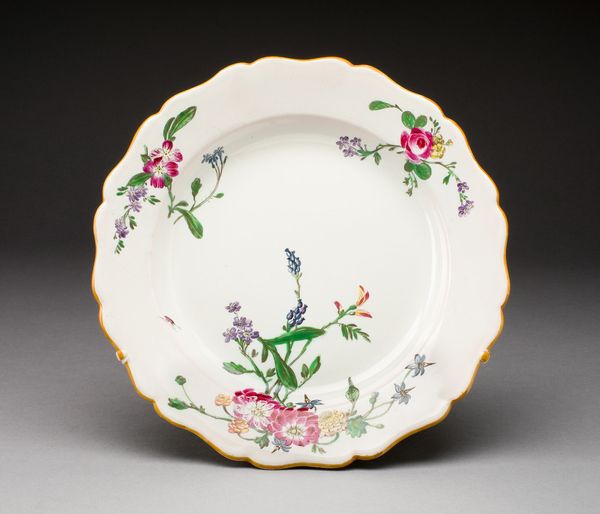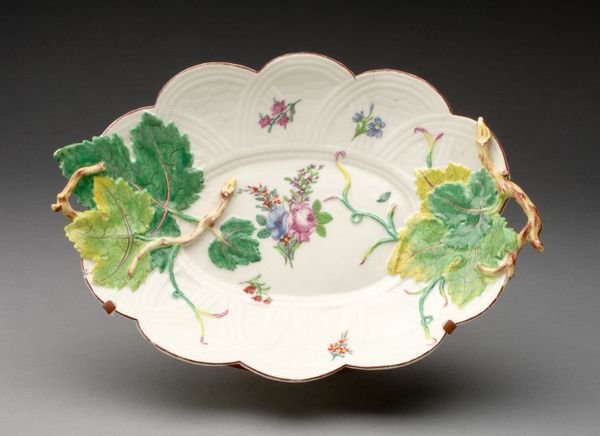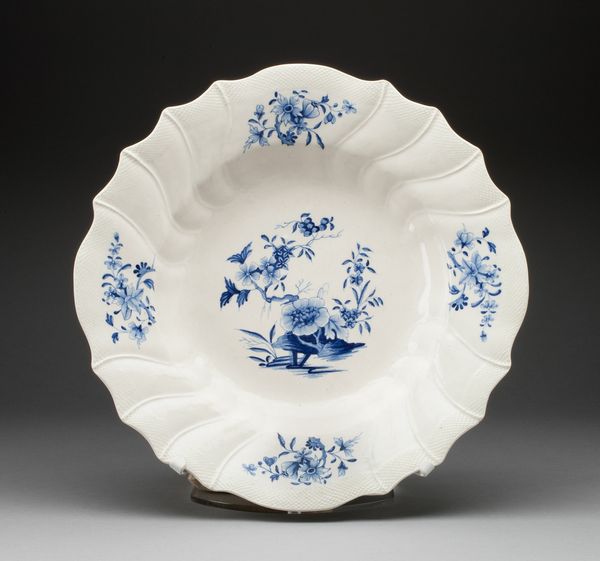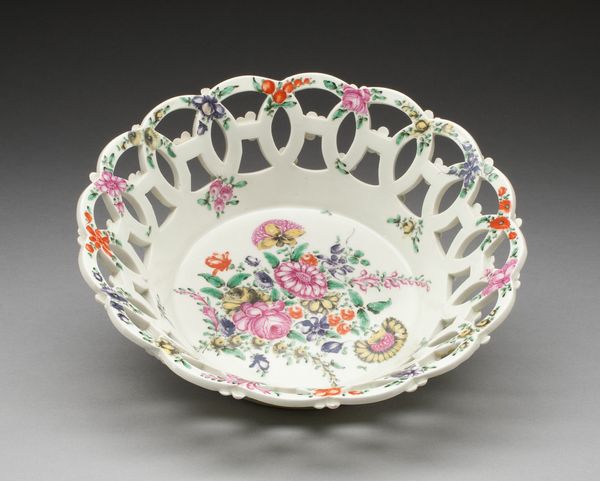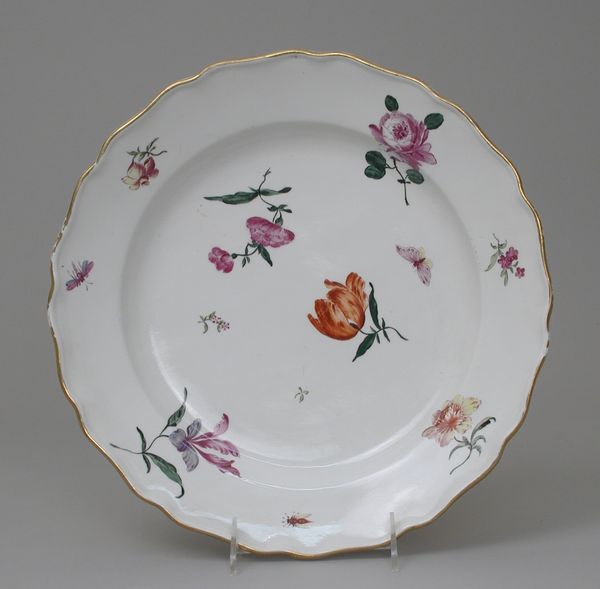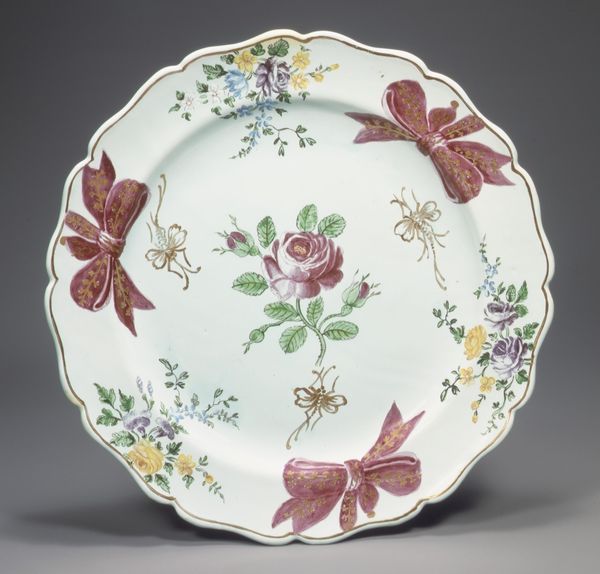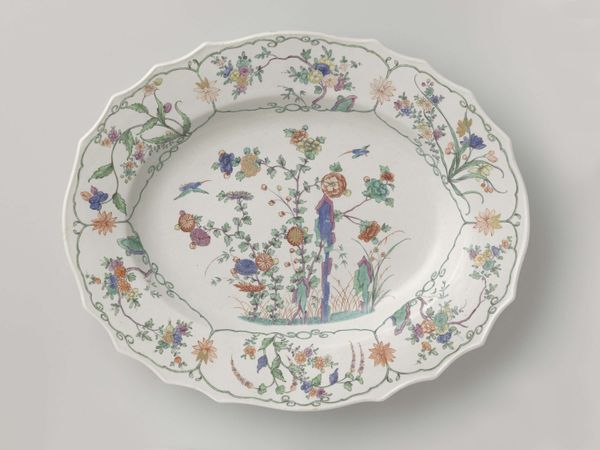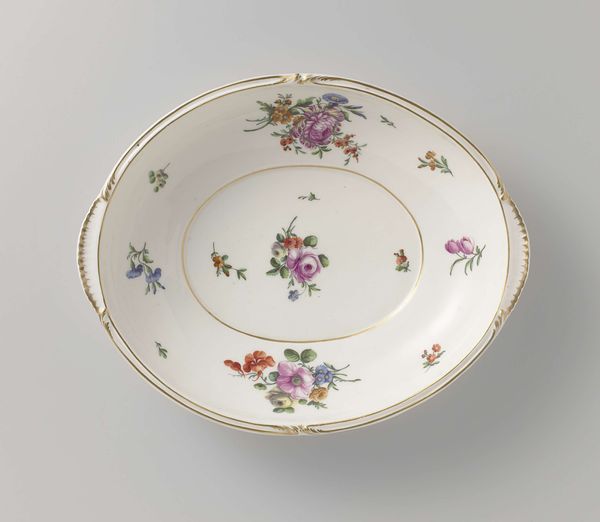
ceramic, porcelain
#
simple decoration style
#
product photograph merchandise
#
egg art
#
3d printed part
#
cake food
#
product fashion photography
#
ceramic
#
porcelain
#
culinary art
#
stoneware
#
england
#
ceramic
#
food photography
Dimensions: 7 1/2 x 7 1/2 in. (19.05 x 19.05 cm)
Copyright: Public Domain
Editor: Here we have a Wedgwood side plate, crafted around 1800 from porcelain. I am immediately drawn to the delicate, almost whimsical decoration in green. What do you make of the overall design and composition? Curator: Indeed. The application of the decoration displays a fascinating tension between controlled design and almost organic freedom. Observe how the scalloped edge is echoed in the painted botanical motifs, primarily rendered in verdant hues. There is an undeniable rhythm established through the repetition of these forms. What do you make of the negative space, and how does it interact with the decoration? Editor: I hadn't really thought about the negative space. It does seem quite deliberate – almost as if the blankness of the porcelain is as important as the green ornamentation. It provides a certain lightness. Curator: Precisely. This tension creates a visual harmony. Note also the subtle variations in the brushstrokes themselves. There is a fluidity in the rendering of the leaves and tendrils which contrasts the more rigid geometry of the plate. Do you think that tension between organic form and rigid structure impacts the piece? Editor: Absolutely! It's that contrast that makes it so visually interesting and avoids the design becoming too predictable. I see what you mean. It’s a simple object but very cleverly composed. Curator: An excellent observation. Through close observation of the object’s structure and ornamentation, we can find layers of visual meaning and intention. The dialogue between these elements is what gives this plate its enduring appeal. Editor: I never would have considered looking at a plate so intently, but I can now appreciate the artistic intention. Thanks for enlightening me!
Comments
No comments
Be the first to comment and join the conversation on the ultimate creative platform.

